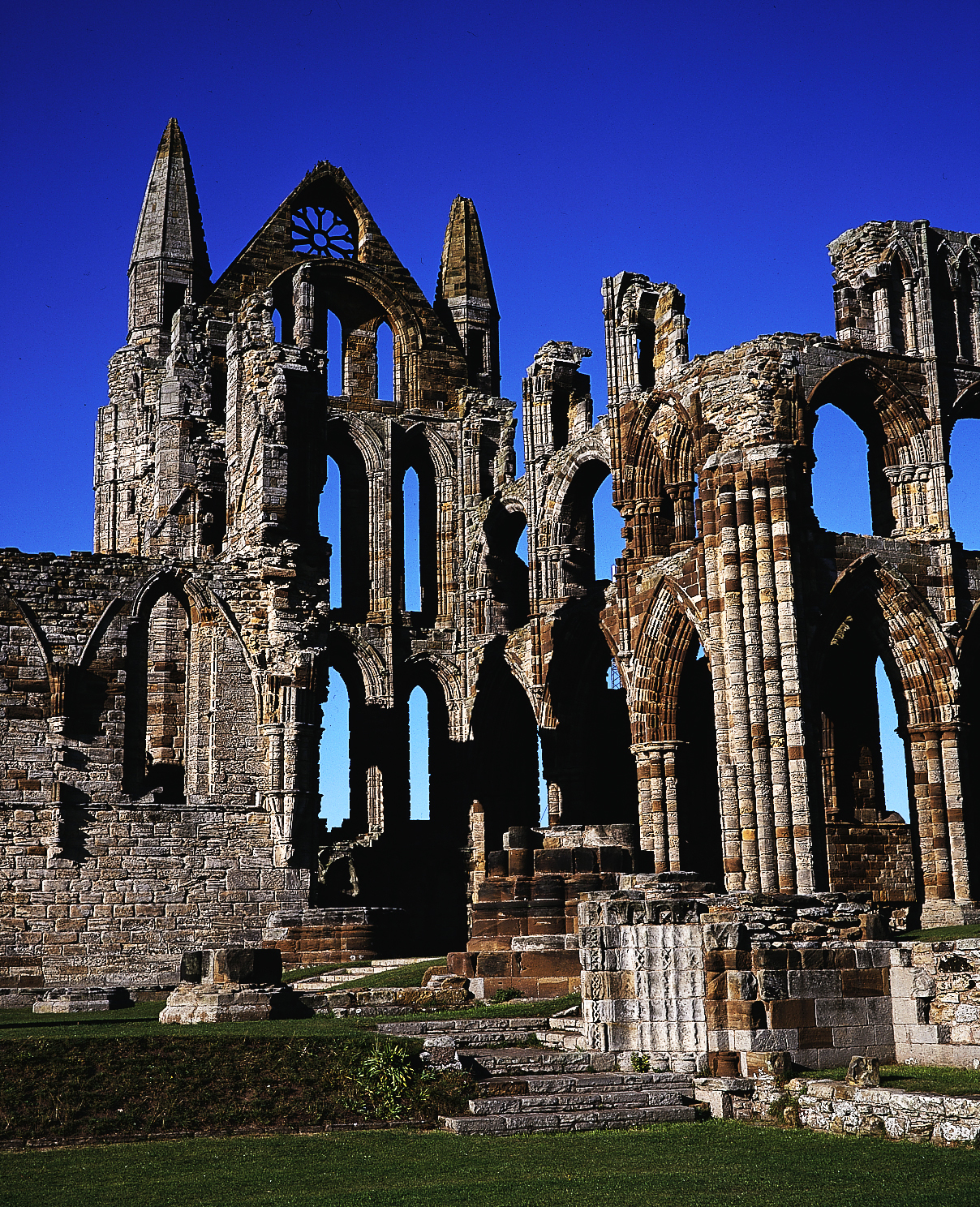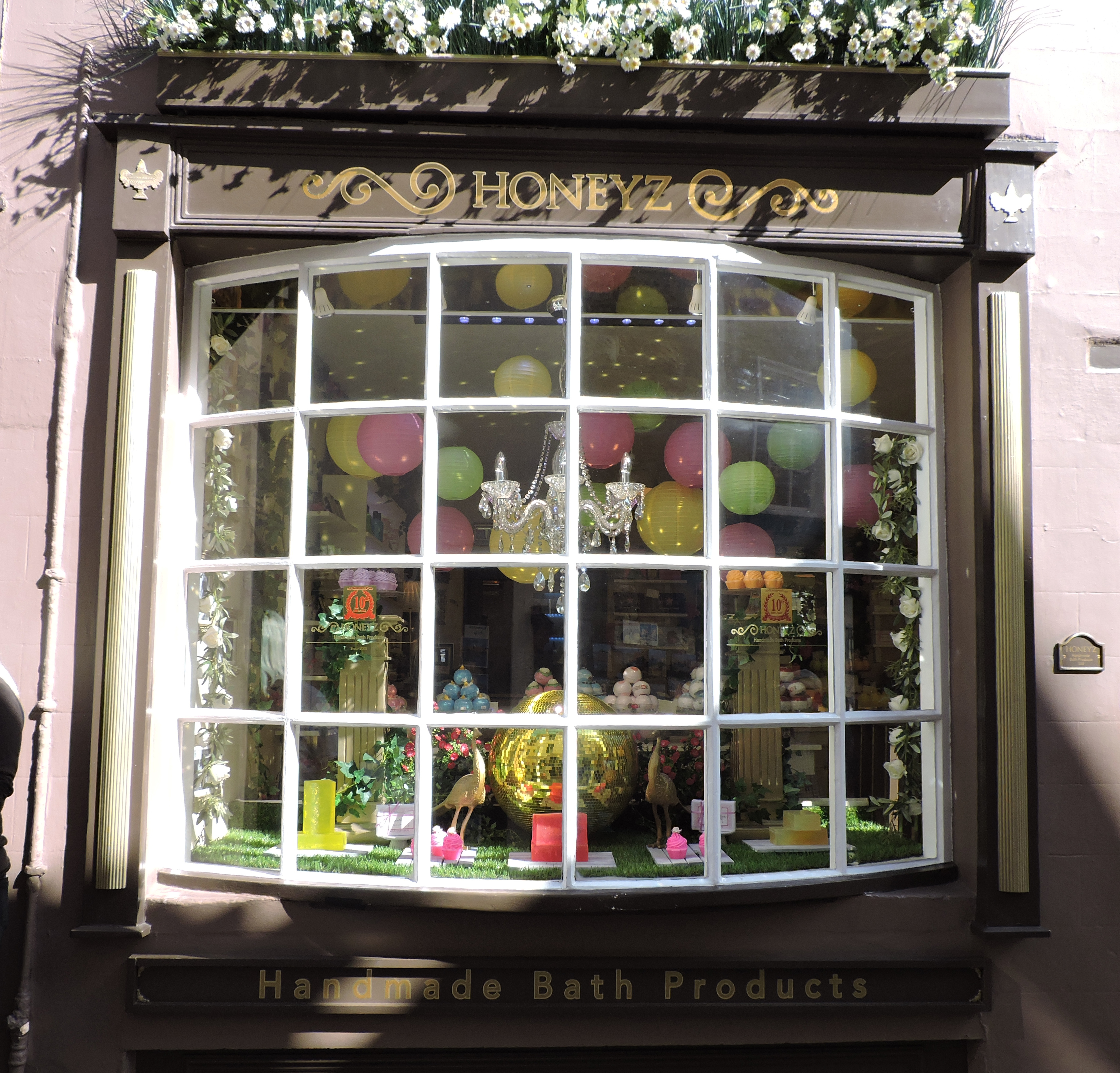WHITBY, ENGLAND — “You’re from Toronto?” asks my cabbie in this picture-perfect North Sea hamlet. Yes, indeed. “Tell me, what does the Six mean?” On our short drive from the train station to my B&B, I find myself discussing rapper Drake, area codes and other Canadiana with the young Raptors fan behind the wheel. Not what I expected to find in an English holiday destination, where the aroma of fresh fish and chips scents the air. But Whitby, I’d soon discover, specializes in the unexpected.
Take the La Rosa Hotel and Tea Room, my B&B. Lewis Carroll liked this spectacular West Cliff location so much that he returned seven times. Today’s owners pay homage to the man who created Alice in Wonderland, with a special nod to the Mad Hatter’s Tea Party. Peering into the dining room, I’m startled by a girl-sized dummy perched on a chair, wearing what appears to be a cow’s head. Still, the place is friendly and pleasing, my room all plush pinks and pale greens and Victorian memorabilia. Breakfast arrives next morning in a jaunty picnic basket.
Exiting Alice-land, I head toward Whitby’s giant whale tusk arch and descend West Cliff, reaching the River Esk estuary below. Passing jaunty fish takeaways, palm readers and ice cream shacks, I follow the riverside to the Victorian-era swing bridge, hanging a left at 18th-century Church Street. Among the street’s jumble of sweet shops, dog-friendly cafés and vintage clothing emporia I notice a raft of shops advertising “Whitby jet.” Romans liked black jet jewelry and tourists often picked up pieces of the shiny black carbon on their beach walks, but jet really took off when Queen Victoria set fashion trends by choosing Whitby jet to complement her mourning attire. Today, Victorian-era jet fetches a queen’s ransom. (And I’d so wanted that stunning cameo!)
Church St. ends at the 199 Steps, a must-climb route for able visitors. Pallbearers once carried coffins up these steps to the Church of St. Mary’s; today’s tourists ascend to the old church before heading to the ruins of 7th-century Whitby Abbey and its impressive museum. Benches are placed at intervals along the way for those needing a breather. Panting a little, I stumble into the old churchyard. At my left are endless vistas of sea and sky and to my right the imposing ruins of Whitby Abbey.

Above: The ruins of Whitby Cathedral is what attracts people to the town but it has much more to offer.
Wandering the graveyard — moody even on a sunny afternoon — it’s easy to understand why this place inspired writer Bram Stoker. On holiday in the 1890s, the theatrical agent-slash-novelist fell under Whitby’s spell, spending hours in the library investigating mysterious shipwrecks and strange local lore. The result of his labours was the 1897 Gothic classic, Dracula, a vampire tale that has never lost its bite.
Hundreds of metres below where I’m standing on the East Cliff (the River Esk divides the town into extremely old East Cliff and slightly newer West Cliff), the Transylvanian Count bounded ashore from a ghostly shipwreck onto Tate Hill Sands, disguised (naturally) as a black dog. In St. Mary’s graveyard, a sleepwalking innocent, dozing on her favourite bench, succumbed to Dracula’s bite — his first English conquest. The undead Count, his black cloak, evil laugh and lustful designs on Victorian womanhood caused a sensation. “A volume of horror,” wrote one reviewer.
From1930s vampire flicks to Tim Curry’s “sweet transvestite” send-up in 1975’s Rocky Horror Show to Sesame Street’s adorable Count von Count, Dracula has never really gone away. Goth-attired fans periodically invade Whitby, but most days are far outnumbered by English pensioners happily walking their dogs and stopping for tea and scones in this canine-friendly town.
Whitby’s dominant historical personality remains the very real Captain James Cook — adventurer, explorer and brilliant mapmaker. Cook apprenticed in Whitby during the 18th century whaling boom. Today his statue looms over West Cliff, near those photogenic whale tusks. Signposts indicate distances to Australia, Newfoundland, mainland Canada (east and west coasts), Indonesia, Hawaii and New Zealand — all places Cook sailed to during the great age of English exploration.
Small, bright and stylish, the Captain Cook Museum occupies the restored riverside home of John Walker, the Quaker shipbuilder with whom young James apprenticed. Its collection of maps, exquisite botanical drawings and artifacts from the Cook era is complemented by workshops in Indonesian batik-making. The museum manages to ooze chic while telling a riveting story.


Left: Whitby is a charming town with lots of quaint shops. Right: It became famous for the jet that was collected along its shoreline.
Captain Cook, it appears, did not survive the ambitions of those who urged him past his limits on his years-long final voyage to find the Northwest Passage. On my last Whitby morning, a volunteer at the Life Boat Museum — a moving testament to those who answer distress calls from the sea — informs me that by his third voyage, “Cook was not a well man.” The formerly kind, caring captain had turned erratic, “hasty” (as one of his crew wrote). In 1779, he was killed in battle with Hawaiians while attempting to kidnap their King.
Whitby’s other highlights include: The spectacular Abbey, where English Christianity first blossomed and Caedmon, a young monk, wrote the first poem in English; quirky St. Mary’s, where one vicar installed hearing trumpets so his deaf wife could hear his sermons; the endlessly enchanting Whitby Museum — with Paleolithic finds, model ships, costumes and weird objects like a desiccated human hand. It’s considered a “Hand of Glory” blessed, according to legend, by Latvian gypsies, as a guarantor luck for criminals.
Tempted by numerous fish restaurants lining the riverside, I followed a local girl’s advice and found my fish-and-chips heaven (Yorkshire-style, with bread and butter and tea) at Hadley’s on Bridge St.
Entertaining, quirky, romantic: that’s Whitby. From my La Rosa window I gaze down at a pale sweep of sand, fringed by North Sea surf as tiny figures stroll by the sea. Beyond the beach rises East Cliff, its height framed by an old church and the ruins of an even older abbey, looming against red and gold skies. It’s haunting, in a good way. •